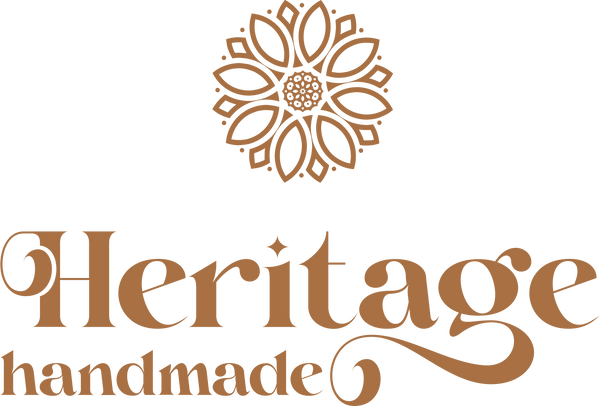
How to Spot a Fake Vintage Moroccan Caftan: Authenticity Guide
Compartir
Vintage Moroccan caftans have become highly sought after in fashion, celebrated for their intricate designs and cultural significance. However, the market is now flooded with replicas, making it essential to distinguish authentic pieces from imitations. This guide provides a step-by-step approach to identifying genuine vintage Moroccan caftans.
1. Key Signs of an Authentic Vintage Moroccan Caftan
A. Fabric & Material Quality
What fabric were vintage Moroccan caftans made from?
Authentic vintage Moroccan caftans are typically crafted from high-quality natural fibers such as silk, velvet, and fine cotton. These materials offer a luxurious feel and age gracefully over time. In contrast, counterfeit caftans often utilize synthetic fabrics like polyester, which lack the softness and durability of natural fibers.
Handwoven vs. machine-made vintage caftan differences
Genuine vintage caftans often feature handwoven textiles, characterized by slight imperfections and unique patterns that signify artisanal craftsmanship. Machine-made fabrics, commonly found in replicas, tend to have uniform patterns and a flawless appearance, lacking the individuality of handwoven pieces. Heritage Handmade
B. Embroidery & Handcraft Details
Authentic Moroccan caftan embroidery patterns
Traditional vintage caftans showcase hand-stitched embroidery with intricate designs, often incorporating metallic threads known as "sfifa." Over time, these metallic threads may exhibit slight tarnishing, indicating age and authenticity. Authentic pieces also feature traditional motifs inspired by Moroccan architecture and nature. In contrast, counterfeit caftans may display perfectly symmetrical machine embroidery and modern prints that deviate from traditional patterns. Morocco Original
C. Labels & Stitching
Do vintage caftans have labels?
Many authentic vintage Moroccan caftans were custom-made and, as a result, may lack brand labels. The absence of modern tags can be an indicator of authenticity. Additionally, genuine caftans often feature hidden seams and delicate hand-stitched finishing, whereas replicas may have visible serging or overlocked stitching, indicative of mass production. Heritage Handmade
D. Wear & Aging Signs
How to check the age of a Moroccan caftan
Authentic vintage caftans naturally exhibit signs of aging. Look for gentle fading of colors and softened fabric, which result from years of wear and proper care. These characteristics contrast with the overly bright colors and stiff materials often found in new replicas.
2. Red Flags of a Fake Vintage Moroccan Caftan
How to spot a fake vintage kaftan
Be cautious of the following indicators that may suggest a caftan is not genuinely vintage:
Fabric Composition: Use of polyester or other synthetic materials instead of natural fibers.
Embroidery Quality: Perfectly symmetrical and machine-made embroidery lacking the nuanced imperfections of hand-stitched work.
Color Vibrancy: Overly bright and unfaded colors, unless the piece has been exceptionally preserved, which is rare.
Stitching Techniques: Visible serging, overlocked seams, and the presence of plastic zippers, all indicative of mass production.
3. Where to Buy Real Vintage Moroccan Caftans
Trusted sellers of vintage Moroccan caftans
To ensure authenticity, consider purchasing from reputable sources:
Specialized Vintage Dealers: Platforms like Etsy, 1stDibs, and The Heritage Handmade collection host sellers specializing in vintage clothing, including Moroccan caftans.
Moroccan Souks: Traditional markets in cities like Fes and Marrakech offer a variety of caftans. When shopping in these souks, inquire about the item's provenance and authenticity.
Estate Sales and Auctions: These venues can be treasure troves for vintage fashion enthusiasts seeking authentic pieces with documented histories.
4. FAQs About Vintage Moroccan Caftan Authenticity
How much should a real vintage caftan cost?
The price of an authentic vintage Moroccan caftan varies based on factors such as age, condition, fabric quality, and provenance. Prices can range from a few hundred to several thousand dollars. For instance, a 1965 royal blue silk caftan purchased for $800 in 2015 sold for $3,200 in 2023, highlighting the appreciation in value of genuine pieces. Heritage Handmade
Can vintage caftans be repaired?
Yes, minor repairs can be undertaken to restore a vintage caftan without significantly impacting its value. It's advisable to consult with a textile conservator experienced in vintage garments to ensure that repairs are conducted appropriately.Heritage Handmade
What’s the difference between Moroccan and Turkish caftans?
While both Moroccan and Turkish caftans share similarities as traditional garments, they differ in design elements and cultural significance. Moroccan caftans often feature intricate hand-stitched embroidery with motifs inspired by local architecture and nature, also they use "Sfifa" and pom-pom "Aakad". whereas Turkish caftans may incorporate different patterns and embellishments reflective of Ottoman influences.
5. Conclusion
Identifying an authentic vintage Moroccan caftan requires careful examination of materials, craftsmanship, and signs of aging. By paying attention to fabric quality, embroidery details, stitching techniques, and natural wear, you can better distinguish genuine pieces from replicas. When in doubt, seek expert opinions or purchase from reputable sources to ensure the authenticity of your caftan.
If you own a vintage Moroccan caftan and are uncertain about its authenticity, consider sharing detailed photos with experts or reputable dealers for evaluation. Engaging with knowledgeable communities can also provide valuable insights and guidance.
For more information on Moroccan caftans and styling tips, explore our related posts:






